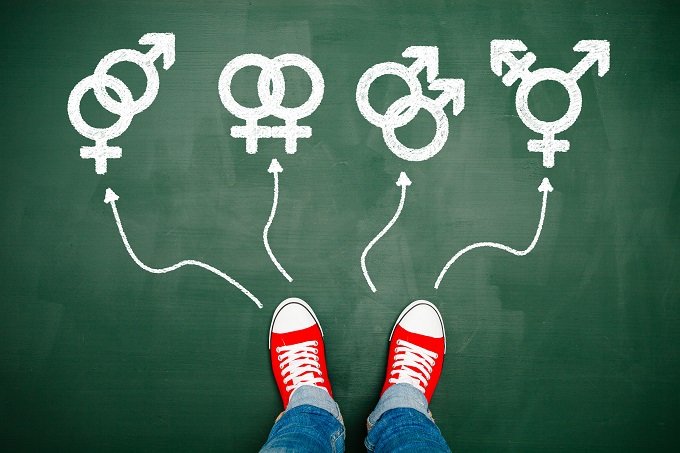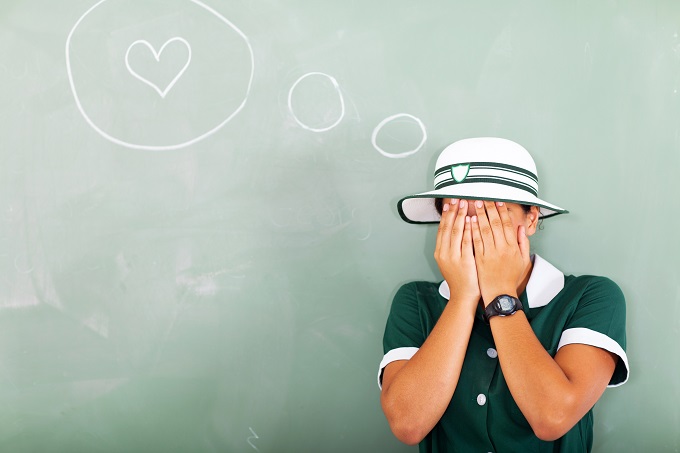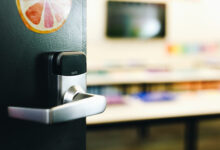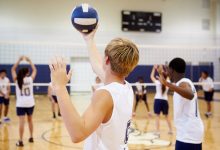
Conversation has bloomed on the discussion of ‘sex education’ in New Zealand.
While the subject matter has evolved considerably over the last 100+ years of teaching, there are calls for further change. According to UC Associate Professor Kathleen Quinlivan, research indicates that school-based sexuality education programmes struggle to engage with contemporary sexualities and relationship issues with children and young people.
“Sexuality education sits uncomfortably as a school subject,” she notes.
“Programmes are under-resourced and under-valued and research shows that the curriculum struggles to make itself relevant and meaningful to young people in terms of their lived experiences of negotiating intimate relationships, particularly in a digital world.”
THIS ARTICLE ORIGINALLY APPEARED IN OUR QUARTERLY MAGAZINE, SCHOOL NEWS.
[DID YOU KNOW?]
a majority of young people
between the ages of 13 and 17
in New Zealand
has never had sex (75.6 percent)
New Zealand Health Education Association (NZHEA) health education kaiārahi Debbie Jones spoke with us about how the NZC influences sexuality education. “The shape of sexuality teaching will be approached quite differently in each school,” she revealed.
“There is no prescribed content (or ‘must teach topics’) in the NZC, so schools have the autonomy to design their programmes in sexuality education, which is an integral part of health education.
“This means that while classroom programmes are thought-out programmes built around the learning needs, the values and belief systems of the students and school community, means that there is variation and inconsistency in approach across Aotearoa.”
On whether social media and/or the internet should be covered in sexuality education, the Ministry is quite vague: “This depends on your school and what is included in your school’s health curriculum. The online world is a part of many children’s learning, from new entrants right through to high school. The responsibility for helping children to manage this learning in a safe way is best done through schools, parents, whānau and family members working in partnership.”
This seems to leave it to the discretion of individual schools. Indeed, the school board of trustees has to consult with school communities “at least once every two years on their draft health curriculum”. However, the nature of this consultation is also up to schools and the board has final approval. National Education Guidelines must be abided and the Ministry stresses that providing “a safe physical and emotional environment for all students” is paramount.
There is potentially a lot of wiggle-room there, in terms of creating a specific sexuality education programme to teach students.

A lot has changed
Once upon a time, during the early-1900s, sex education in New Zealand was dubbed ‘sex hygiene’ and focussed on warning students against premarital sex and masturbation. Te Ara, the Encyclopedia of New Zealand, expands: “The introduction of sex education in schools was debated in Parliament in 1910, but for a long time there were no coordinated programmes. Students got information from books, pamphlets and lectures outside school hours.”
Over the next several decades, sex education evolved quite a bit: by the 1960s some high schools were teaching limited sex-ed and the Education Amendment Act 1985 allowed for some sex education in primary schools. Still, its role in schools was seen to be that of a lesson on reproduction. Biological pedagogy and clinical discussions were the focus.
As Te Ara reviews: “A new health syllabus, Understanding change in puberty, was introduced in 1987, and in 1989 legal restrictions were removed on advising under-16-year-olds on the use of contraceptives.”
1999 saw a switch in terminology for schools, as ‘sex education’ was replaced with ‘sexuality education’; and moved away from the strictly clinical approach. New Zealand refocussed on health and physical education as a whole, attempting to include aspects of ‘sexuality’ like relationships, spirituality, and emotion into the lesson plan.
As Debbie Jones explained: “It is uncommon these days for schools just to offer sex education and teachers use the term sexuality education to reflect the more holistic nature of the issues explored.”
[DID YOU KNOW?]
in a national survey of
8000 secondary students,
96 (1.2 percent) said
they were transgender
and 202 (2.5 percent) said
they were not sure
What about today?
A lot has changed in our culture since 1999 – the internet, for one thing, is now a permanent force in the lives of children and teenagers.
While it has become compulsory for sexuality education to be taught up until Year 10, parents are able to exempt children if they write to the principal. But parents can’t so easily exempt their child from the using the internet, and that is where most children now look for information about health and sexuality, according to the Ministry of Education.
Digital technology has changed the way young people perceive a lot of the subject matter schools are told to cover. From dating apps and reality TV, to a 24-hour news-cycle that reports on celebrity sex tapes and a steady stream of social media platforms showcasing the moment-by-moment relationship scandals of [Insert popular teen star here.]. The nature of a relationship – even friendship – is constantly being dissected in pop culture, which is bound to be confusing for any child trying to navigate school life.
Associate Professor Quinlivan notes: “In an era of social and digital media, it’s not surprising to see diverse young people are increasingly taking sexuality education into their own hands. Sexuality education researchers suggest that sexuality education needs to focus more on helping young people to imagine and participate in conversations related to sexualities and relationships both within and outside school.
“Sexuality and relationships education is paradoxically both everywhere and nowhere in today’s world. A lot of anxiety, and sometimes panic, surrounds learning about sexualities and relationships both within and outside schools. Parents too, feel out of their depth with knowing how best to educate their children and young people about sexuality and relationships in an era of consumption and digital technologies.”
NZHEA offers a different view, with Debbie Jones telling School News: “In an ideal world, all students would feel safe, valued, visible and accepted in all aspects of the school environment, including in health and sexuality education classrooms. However, there is variation in health education across schools, and research has shown that some teachers struggle with the more ‘personal’ nature of learning in this area.
“Sometimes health education is devalued in a school, for example not having enough curriculum time, or trained teachers teaching the subject. So perhaps it is up to health teachers and students to advocate when and where they can to improve access to quality learning in this area. As part of the teaching as inquiry approach, teachers undertake on-going reflection into the impact of their teaching practice on their learners, including on-going collection of student voices to see the extent to which the learners’ needs are being met.
“Also, responding to and supporting students with diverse sexual and gender identities is a whole school approach and doesn’t lie only with teachers and students in sexuality education – education policy makes clear the role and responsibility of all teachers and leaders to value diversity, practice in ways that are inclusive of diversity and promote student wellbeing.”
[DID YOU KNOW?]
sexuality education programmes
that focus on engagement,
empowerment and information
rather than risk,
are shown to reduce risky behaviour
Terminology and labels
One thing that education and the internet both do is create a vocabulary around particular issues so they can be discussed. Type ‘sexuality’ into Wikipedia and you will soon come across terms like pansexual, asexual, heterosexual and homosexual. The ‘sexuality’ Wikipedia page references “religious sexual morality”, the pornographic industry, controversy over the Kinsey scale, reproductive rights, sexual abuse and harassment, STIs, contraception, gender theory, anatomy and sexual response, something called “sociocultural aspects”, and ‘the patriarchy’. These are just keywords glanced over a single webpage on the subject of sexuality. It’s a frantic mashing together of topics that no teenager Googling definitions or information is likely to fact-check.
But how many of those topics would get airtime in a school sexuality education programme? Because programme content varies so widely, the answers to this could be vast and differ from school to school.
Debbie Jones noted, “teachers integrate a wide range of materials from agencies such as Rainbow Youth and Family Planning to support their teaching and learning in this area and should be accessing ongoing professional learning and development to make sure they are up-to-date with current issues and terminology.”
So, what should schools be tackling in their sexuality education lessons?
Associate Professor Kathleen Quinlivan suggests that schools take on subjects like gender diversity, sexual pleasure, violence and intimacy with more verve. “Young people can feel frustrated with the emphasis on the biological aspects of sexuality, and want to learn more about gender diversity, violence in relationships, intimacy, sexual pleasure and love.”
On whether topics like sexual pleasure and consent have historically been ‘glossed over’ by education programmes, Debbie Jones said: “I’m not sure I agree with this. Resources commonly used by health teachers have included activities on pleasure and consent for the past 30 years.
“Learning opportunities to develop understanding around consent is very much part of the curriculum. Activities may include Think/Pair/Share where students are required to think about something themselves first, share and listen with a partner then again with a bigger group, thus allowing them to build understanding around the different attitudes towards sexuality issues, other activities such as continuums could be used to develop “the why we think this way” – these allow them to develop confidence in their decision making and views.
“Bus stop ideas gives the teacher insight to their understanding around the different attitudes towards sexuality or a particular aspect of sexuality. Interpersonal skills are developed through role play or reading a scenario which involved a pressure or imbalanced situation. The variety of learning activities used are all geared towards meeting the wide range of learning outcomes of sexuality and health education.
“The different discourses around the notion of ‘pleasure’ in sexuality education would suggest there’s a variable understanding around what this is intended to mean. For decades we’ve had resources that require students to consider what young people can do to express their affection and attraction or each other – while at the same time realising and recognising the limits of ‘how far they want to go’ – and being able to communicate this. If a teacher is teaching sexuality education to students under 16 years (e.g. year 9-10 when most students have some form of compulsory sexuality education), there is still a professional responsibility to recognise age of consent (of 16) and that NZ research shows that only a minority of under-16s are sexually active, so the opportunities or the scope that a teacher has to respond to the learning needs of students in relation to ‘pleasure’ also needs to be age and experience appropriate.”
Opportunities for learning
The amount of content accessible online is, quite literally, infinite and children can scroll through endless keywords, half-truths, opinions and images.
But the vast benefit of a school sexuality education programme is the opportunity for depth, understanding and discussion. This is why continual evolution should always be part of the goal and, even for teachers, there is always more to learn.
*Did you know facts sourced from education.govt.nz









